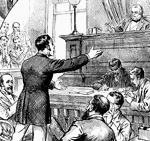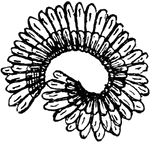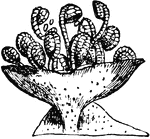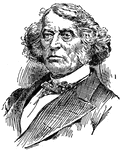
Charles Sumner
Charles Sumner (January 6, 1811 – March 11, 1874) was an American politician and senator from Massachusetts.…

Nightjar
The Night-jar is a bird of evil omen in the estimation of our rural population. The reverse should be…

Woodpecker
While a woodpecker is drilling, the two parts of the bill are closed together, making a wedge-pointed…
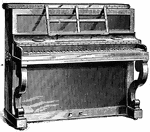
Upright Piano
A piano having the strings mounted vertically in a rectangular case with the keyboard at a right angle…
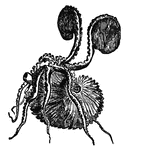
Paper Nautilus
The paper nautilus is closely related to the octopus. It creates its own thin shell, or egg case, in…

Paper Nautilus
The paper nautilus is closely related to the octopus. It creates its own thin shell, or egg case, in…

Police Headquarters
"Interior of the outbuilding attached to Marshal Kane's Police Headquarters, Holliday Street, Baltimore-…
Gunboat engagement
"Engagement between the United States gunboats, commanded by Commodore Davis, and the Confederate Mosquito…

Caracal
"The Caracal, or Siyah Ghush, F. Caracal, is supposed by some to be the lynx of the ancients.…

Attack on Confederate Works
"Siege of Vicksburg, attack on the Confederate Works, May 22nd, 1863. Our sketch represents the terrible…
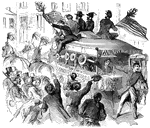
Bucktail Recruit
"Recruiting in Philadelphia, Pa., for the Bucktail Pennsylvania Regiment, August, 1862. This famous…

Federal Prisoners
"Federal cavalry covering the escape of Federal prisoners from Libby Prison, Richmond, Va. The feeling…

Fort Walker
"Landing of United States troops at Fort Walker, after the bombardment, November 7th, 1861. In order…

Recrossing the Potomac
"General Banks's Division recrossing the Potomac from Williamsport, Md., to attack the Confederate army…
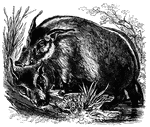
Guinea Hog
"It is of the size of a common hog; has long, narrow, straight ears, with a pencil of hair at the tips.…

Riedesel House
"The Riedesel House, Cambridge. This is from a pencil sketch by Mr. Longfellow. I am also indebted to…
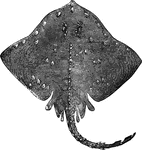
Thornback
"The prevailing color of the upper part, which is rough and with small points, is dark brown, the under…
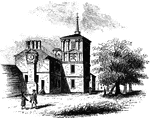
State House
"Walnut Street front of the State House in 1776. This gives the appearance of the shorter steeple, which…

Acrobasis
"a, leaflets attacked by a larva of A. juglandis; b, case of larva; c, wings of A. nebulo; d, wings…
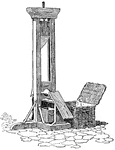
Guillotine
"The guillotine was used during the Reign of Terror of the French Revolution. Now that the power of…
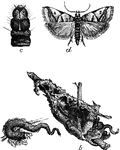
Acrobasis
"a, case containing caterpillar; b, cases in winter; c, head and thoracic joints of larva, enlarged;…
Tube of the watering-pot shell
"The animal in this case is inclosed in a cacareous tube, the anterior extremity of whichi is closed…
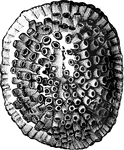
Tube of the water-pot shell magnified
"The animal in this case is inclosed in a cacareous tube, the anterior extremity of which is closed…

Binnacle
"A Binnacle, corrupted from bittacle, a wooden case or box in which the compass on board a ship is kept…
Terebella medusa
"Distinguished by their habit of forming a tube or case, within which the soft parts of the animal can…

Everted eyelid
"Showing how the upper eyelid may be everted with a pencil or penholder." — Blaisedell, 1904
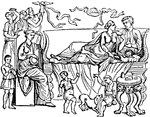
Accubatio
"The act of reclining at meals. The Greeks and Romans were accustomed, in later times, to recline at…
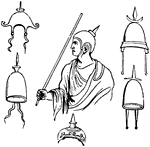
Apex
"A cap worn by the flamines and salii at Rome. The essential part of the apex, to which alone the name…
Arcus
"The bow used for shooting arrows, is one of the most ancient of all weapons, but is characteristic…
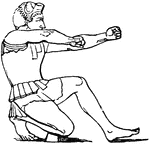
Arcus
"The bow used for shooting arrows, is one of the most ancient of all weapons, but is characteristic…

Sandal
"The Sandal is a protection for the foot, worn in ancient times. It was usually a sole of hide, leather,…
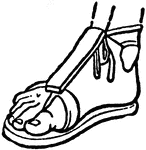
Sandal
"The Sandal is a protection for the foot, worn in ancient times. It was usually a sole of hide, leather,…

Sandal
"The Sandal is a protection for the foot, worn in ancient times. It was usually a sole of hide, leather,…
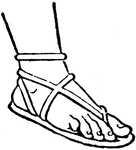
Sandal
"The Sandal is a protection for the foot, worn in ancient times. It was usually a sole of hide, leather,…
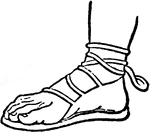
Sandal
"The Sandal is a protection for the foot, worn in ancient times. It was usually a sole of hide, leather,…
!["Shark is an English popular name for any individual of the group Selachoidei. Sharks are scaleless, and the skin usually rough. They are numerous in tropical seas, becoming scarcer as they recede from the warmer regions, a few only reaching the Arctic circle. They are rapid swimmers, with great power of endurance; the larger sharks are exclusively carnivorous, and some of them extremely dangerous to man. They scent their food from a distance, and are readily attracted by the smell of blood or decomposing bodies. The flesh of sharks is coarse, but it is sometimes eaten. Their rough skin is employed by joiners to polish fine-grained wood, and by cutlers to cover the hilts of swords to make them firmer in the grasp. [Pictured] Egg of Scyllium Chilense"—(Charles Leonard-Stuart, 1911)](https://etc.usf.edu/clipart/16100/16199/sharkegg_16199_mth.gif)
Shark Egg
"Shark is an English popular name for any individual of the group Selachoidei. Sharks are scaleless,…

Sphinx
"Sphinx is a Greek word signifying 'strangler,' applied to certain symbolical forms of Egyptian origin,…
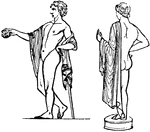
Chlamys
"A scarf, denoted an article of the amictus, or outer raiment of the Greeks. It was for the most part…
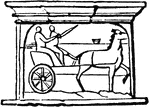
Cisium
"A light open carriage with two wheels, adapted to carry two persons rapidly from place to place. The…
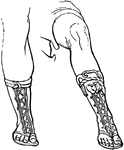
Cothurnus
"A boot. Its essential distinction was its height; it rose above the middle of the leg, so as to surround…

Ring the Bull
"This amusing game requires more care and delicacy of touch than at first seems to be the case. The…

Lawn Cupolette
"This game is played by means of seven pins, made so that they may either be driven into the ground…

Cudgel Game
"Here is a new game, which is causing a great deal of amusement at social gatherings in Europe. Two…
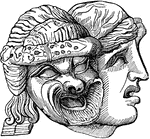
Persona
"A mask. Masks were worn by Greek and Roman actors in nearly all dramatic representations. This custom…

Persona
"A mask. Masks were worn by Greek and Roman actors in nearly all dramatic representations. This custom…

Pistor
"A baker, from pinsere, to pound, since corn was pounded in mortars before the invention of mills. At…
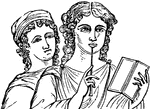
Stilus
"Stilus or Stylus conveys the general idea of an object tapering like an architectural column. It signifies:…
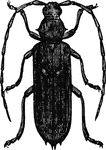
Banded Hickory Borer
Very variable in size and color, but usually a brownish gray and covered in shory whitish gray hairs.…
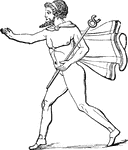
Mercury with caduceus
"Mercury, with his caduceus, summons the souls of the departed from Orcus, or the low world, as in the…

Tropaeum
"Tropaeum, a trophy, a sign and memorial of victory, which was erected on the field of battle where…
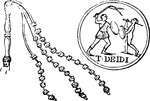
Scourge
"The Furies are generally represented with a scourge, with which to punish the wicked in Tartarus. It…


